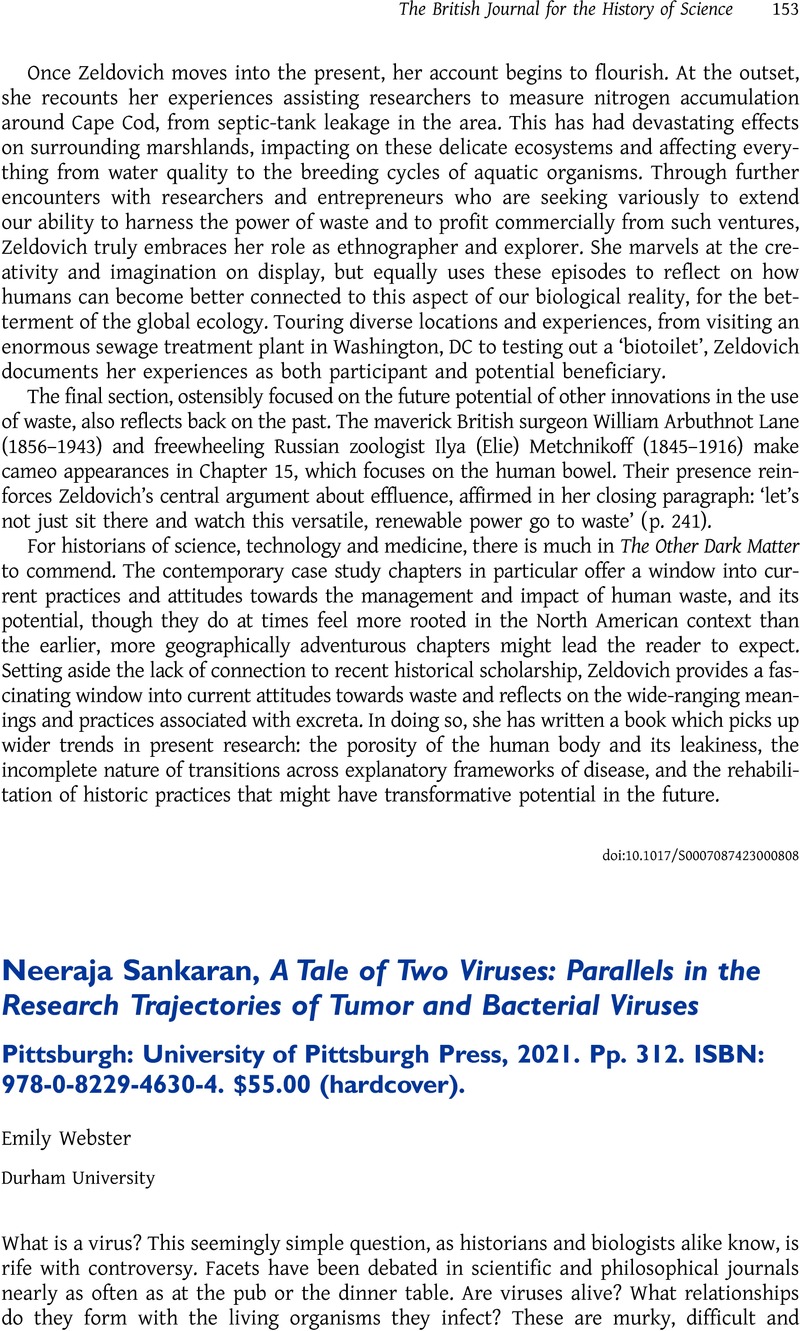No CrossRef data available.
Article contents
Neeraja Sankaran, A Tale of Two Viruses: Parallels in the Research Trajectories of Tumor and Bacterial Viruses Pittsburgh: University of Pittsburgh Press, 2021. Pp. 312. ISBN: 978-0-8229-4630-4. $55.00 (hardcover).
Review products
Neeraja Sankaran, A Tale of Two Viruses: Parallels in the Research Trajectories of Tumor and Bacterial Viruses Pittsburgh: University of Pittsburgh Press, 2021. Pp. 312. ISBN: 978-0-8229-4630-4. $55.00 (hardcover).
Published online by Cambridge University Press: 20 December 2023
Abstract
An abstract is not available for this content so a preview has been provided. Please use the Get access link above for information on how to access this content.

- Type
- Book Review
- Information
- Copyright
- Copyright © The Author(s), 2023. Published by Cambridge University Press on behalf of British Society for the History of Science



